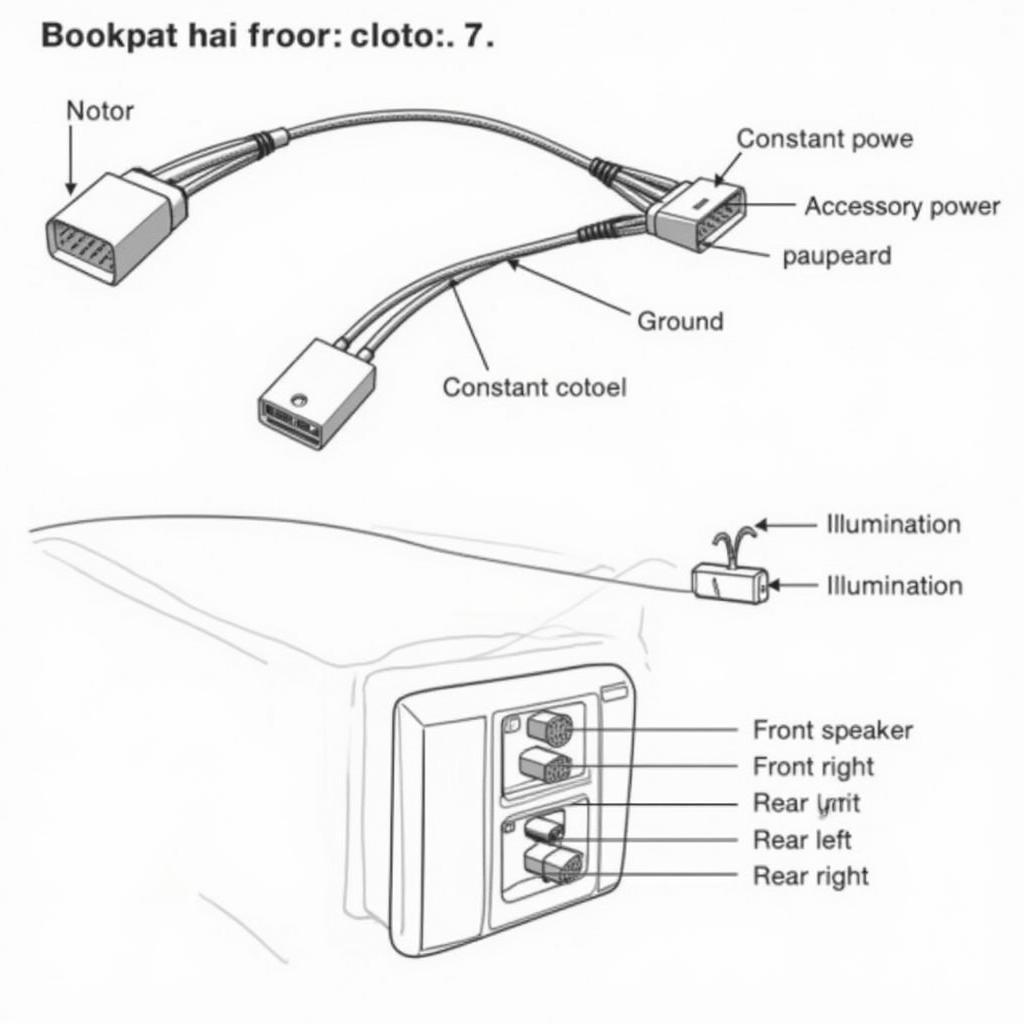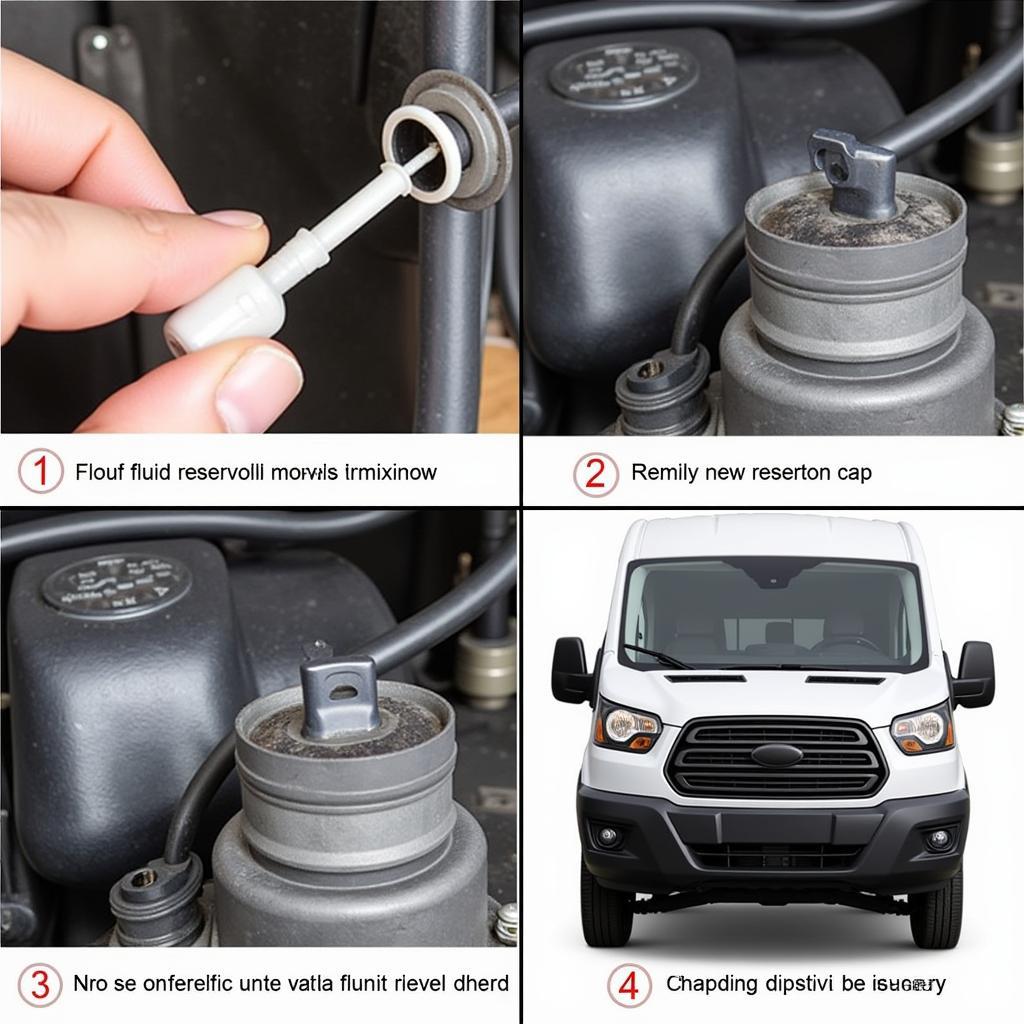The brake warning light on your Nissan Armada is a crucial safety indicator. Ignoring it could lead to serious braking issues and compromise your safety. This comprehensive guide will help you understand the potential causes of a brake warning light on your Nissan Armada and provide effective solutions for troubleshooting and repair. Let’s dive into the details to ensure your Armada’s braking system is in top condition.
Understanding Your Nissan Armada’s Brake Warning Light
The brake warning light can illuminate for several reasons, ranging from simple issues like a low brake fluid level to more complex problems such as a malfunctioning ABS system. Identifying the root cause is crucial for effective repair. Soon after this opening, you’ll find more detailed information on specific problems and solutions. Check out our guide on the nissan armada brake warning light for a comprehensive overview.
Common Causes of a Brake Warning Light
Several factors can trigger the brake warning light in your Nissan Armada. Understanding these causes can help you pinpoint the problem and determine the necessary course of action.
Low Brake Fluid
One of the most common culprits is a low brake fluid level. This could indicate a leak in the braking system, worn brake pads, or a problem with the master cylinder.
Worn Brake Pads
Brake pads naturally wear down over time. When they reach a certain point, a sensor triggers the warning light to alert you to replace them.
Faulty ABS System
A malfunctioning Anti-lock Braking System (ABS) can also illuminate the brake warning light. This could be due to a faulty sensor, pump, or control module.
Parking Brake Engaged
Sometimes, the simplest explanation is the correct one. Ensure the parking brake is fully disengaged, as leaving it on can activate the warning light.
Brake Fluid Leak
A leak in the braking system can lead to low brake fluid and trigger the warning light. This requires immediate attention to prevent further damage and ensure safe braking.
Troubleshooting Your Nissan Armada’s Brake Warning Light
Here’s a step-by-step guide to troubleshooting your brake warning light:
- Check the Parking Brake: Ensure the parking brake is completely released.
- Inspect Brake Fluid Level: Check the brake fluid reservoir and top it off if necessary.
- Examine Brake Pads: Visually inspect the brake pads for wear. If they appear thin, they likely need replacement.
- Scan for Diagnostic Trouble Codes (DTCs): A diagnostic scanner can pinpoint specific issues within the ABS or other braking system components.
- Consult a Professional: If the problem persists, it’s essential to seek professional assistance from a qualified technician. For older models, you can also find specific information regarding the 2005 armada brake warning light.
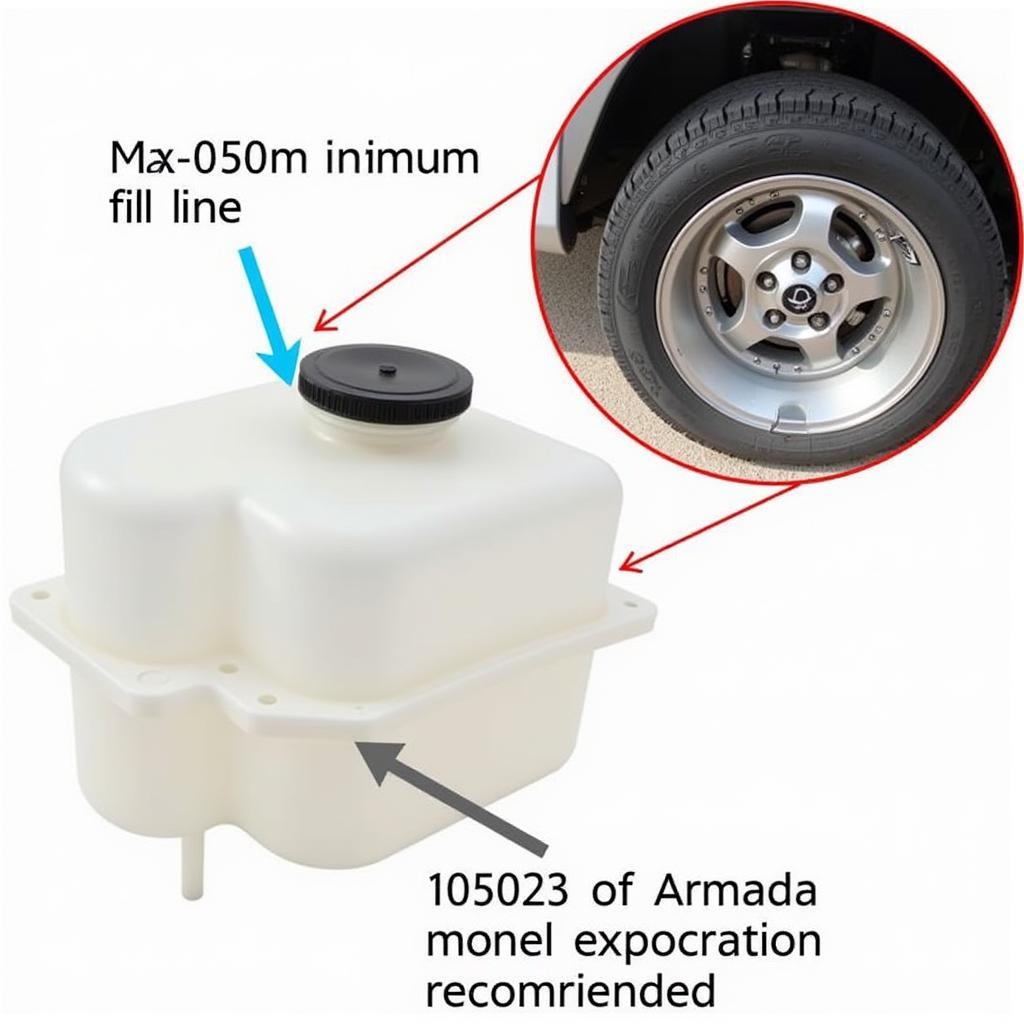 Checking the Brake Fluid Reservoir in a Nissan Armada
Checking the Brake Fluid Reservoir in a Nissan Armada
Why is my Nissan Armada brake warning light on?
The brake warning light can illuminate due to various factors, such as low brake fluid, worn brake pads, a faulty ABS system, or even a simple oversight like the parking brake being engaged.
What should I do if my Nissan Armada brake warning light stays on?
If the light persists, it’s crucial to systematically troubleshoot the issue, starting with checking the parking brake and brake fluid level, inspecting the brake pads, and potentially scanning for diagnostic trouble codes. If the problem remains unresolved, consulting a qualified technician is highly recommended.
Can I drive my Nissan Armada with the brake warning light on?
While it might be possible to drive short distances, driving with the brake warning light on is highly discouraged. It signals a potential problem with your braking system, which can compromise your safety and lead to more extensive damage.
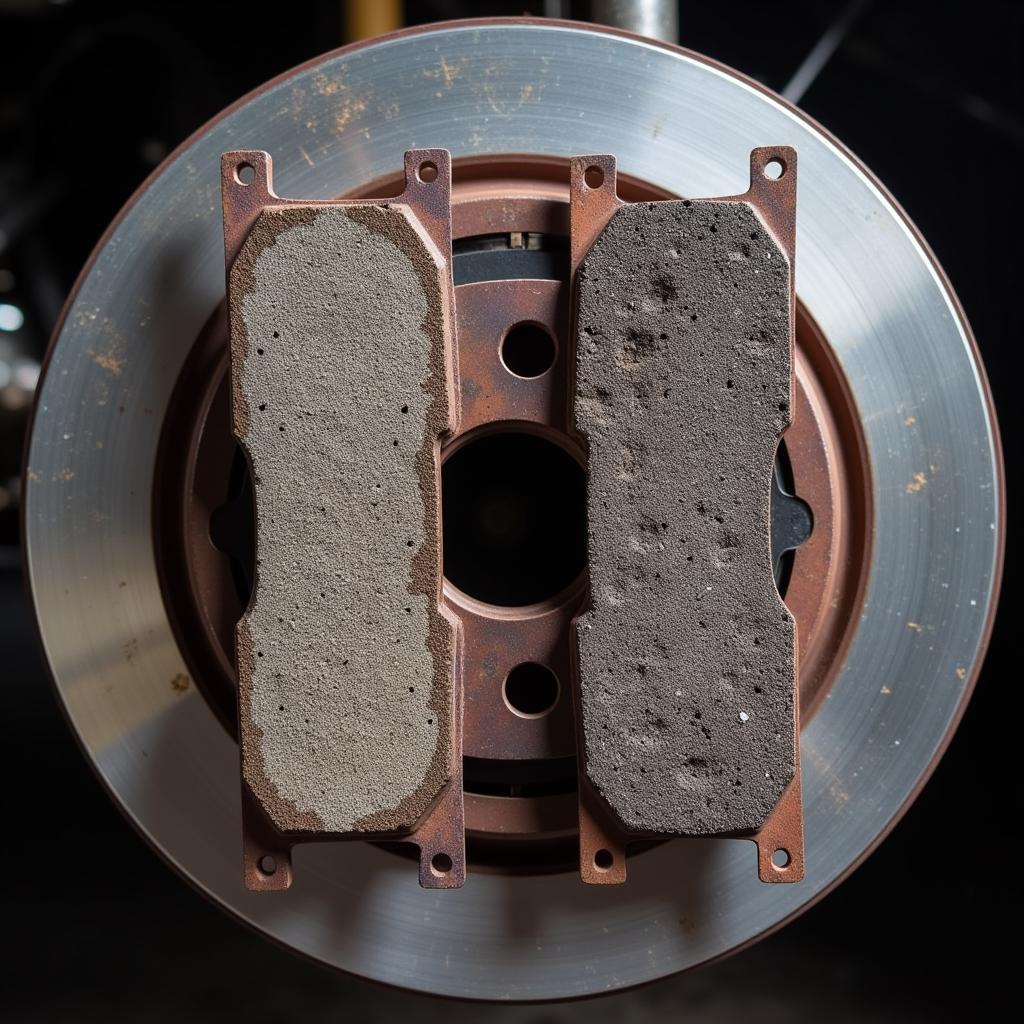 Worn Brake Pads on a Nissan Armada
Worn Brake Pads on a Nissan Armada
“Ignoring a brake warning light is like ignoring a ticking time bomb,” says John Smith, Senior Automotive Technician at Expert Auto Repair. “It’s crucial to address the issue promptly to prevent further damage and ensure your safety on the road.”
How to Reset the Brake Warning Light on a Nissan Armada
After addressing the underlying issue causing the brake warning light, the light should reset automatically. If it persists, a diagnostic scan tool might be needed to clear any stored trouble codes.
Preventing Brake Warning Light Issues in Your Nissan Armada
Regular maintenance, including brake inspections and fluid changes, can help prevent future brake warning light issues. Staying proactive with your vehicle’s maintenance can significantly reduce the risk of unexpected braking problems.
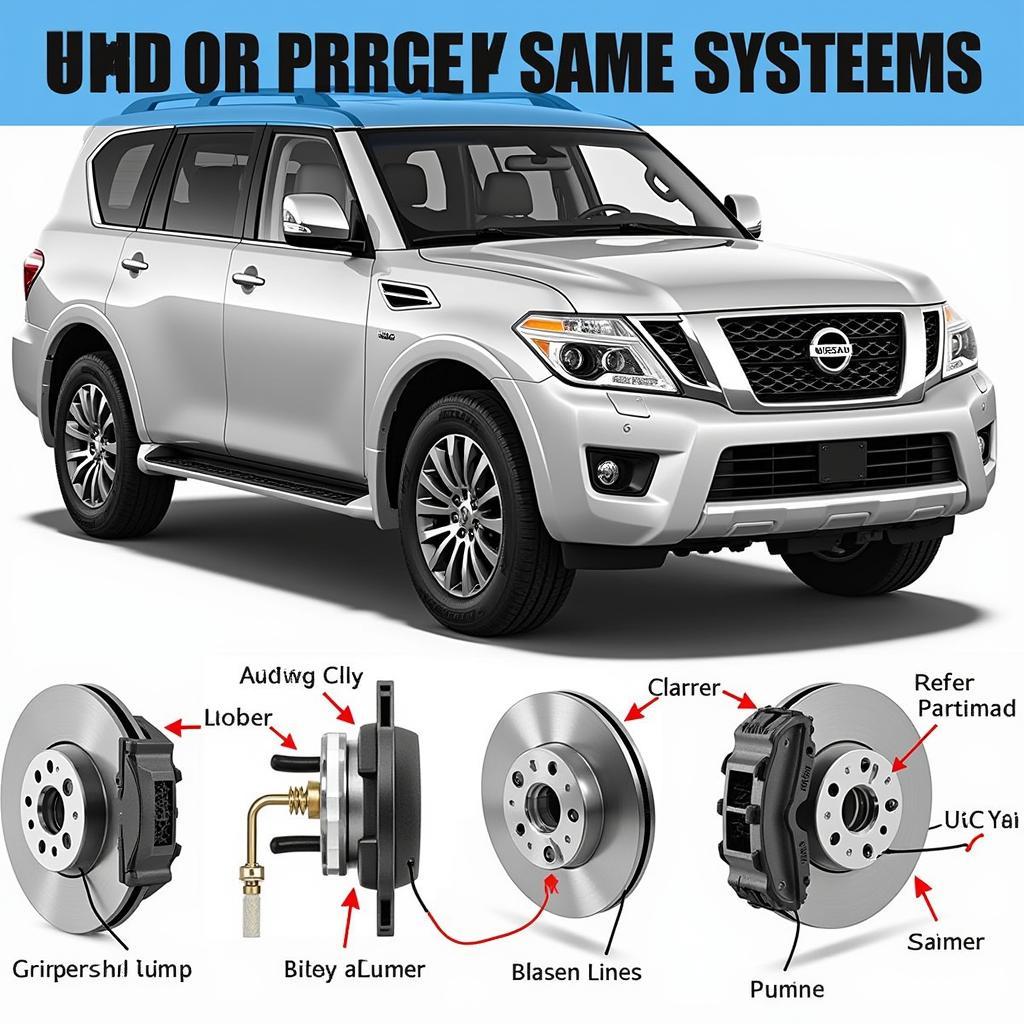 Nissan Armada Brake System Inspection
Nissan Armada Brake System Inspection
Conclusion
The brake warning light on your Nissan Armada is a vital safety indicator that should never be ignored. By understanding the potential causes and following the troubleshooting steps outlined in this guide, you can address the issue effectively and maintain the safety and reliability of your vehicle. Remember, prompt action is key to preventing further damage and ensuring a safe driving experience. If you have any doubts or concerns, consulting a qualified technician is always the best course of action. Don’t ignore your nissan armada brake warning light.
FAQ
-
What does the brake warning light mean? It signals a potential issue with your braking system, such as low brake fluid, worn brake pads, or a faulty ABS system.
-
Is it safe to drive with the brake warning light on? No, it’s highly discouraged. Driving with a compromised braking system can be dangerous.
-
How can I fix the brake warning light on my Nissan Armada? Troubleshoot the issue by checking the parking brake, brake fluid level, and brake pads. If the problem persists, consult a professional.
-
How often should I check my brake fluid? It’s recommended to check your brake fluid level at least once a month.
-
Can I reset the brake warning light myself? Typically, the light resets automatically after the underlying issue is addressed. A diagnostic tool might be needed to clear any stored codes.
-
How can I prevent brake warning light issues? Regular maintenance, including brake inspections and fluid changes, can help prevent future problems.
-
What if I’ve tried everything and the light is still on? Consult a qualified technician for a thorough diagnosis and repair.


